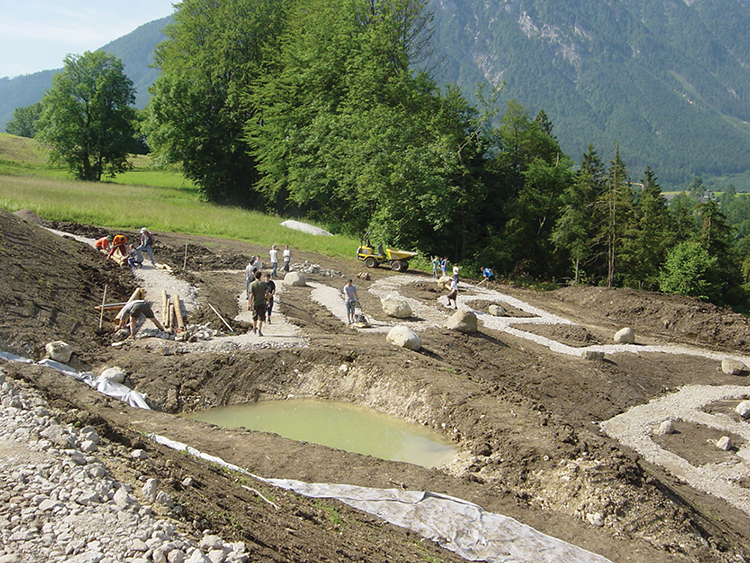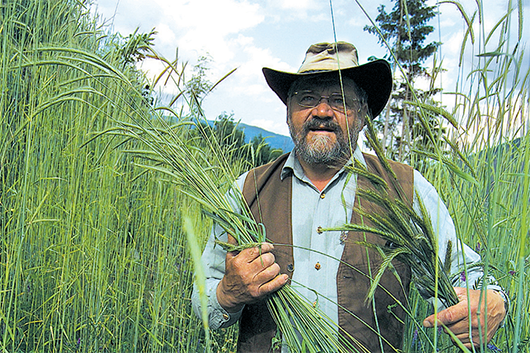The principles of permaculture work all over the world. In my first book The Rebel Farmer I have already described my projects in Brazil, Colombia and North America (Montana). Using strategies based on permaculture it becomes possible to practice agriculture successfully under difficult conditions (soil conditions, climate). The following account should give anyone that is interested in permaculture the courage to make their visions and plans a reality even if the locations they are working in are not ‘favourable’. On my project in Scotland I could see the positive results that were possible on acid soil with no real work to maintain the area within a short period of time.
On my first survey of the plot we selected test areas at different altitudes (approximately 100m–350m above sea level) in which I could begin to experiment. The photo shows a discussion with Gernot Langes-Swarovski, Mag. Christian Koidl and my wife Veronika on site.
The permaculture project in the Scottish Highlands was in cooperation with the Langes-Swarovski family. The goal was to create a permaculture garden for their private use day to day. This shared project gave me the opportunity to try out my methods on the acid peat soil (the pH value was between four and five) of the Scottish heathland.
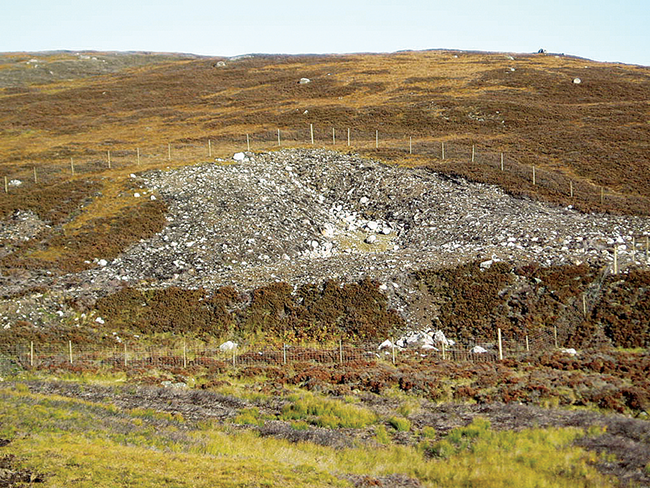

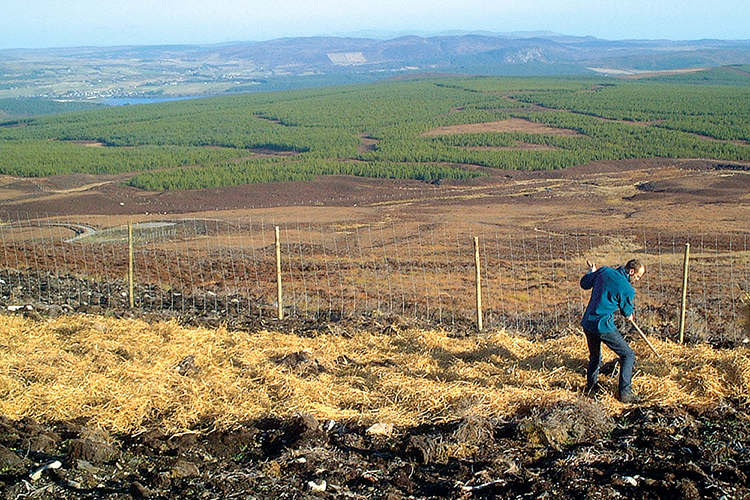


left to right, top to bottom:
In the photo an eroded section of land that we chose as a test area can be seen. It was fenced off to minimise grazing by deer. The vegetation in the area mostly consists of sedge (Cyperaceae Eriophorum and Carex) and heather (Calluna vulgaris), which cope well with the prevailing acid conditions.
In May 2003 we sowed these test areas with the first seed mixtures. They contained cereals (ancient cereals: emmer, einkorn and ancient Siberian wheat) with a catch crop of vegetables (radishes, lettuce etc.) and soil improving plants (various legumes). The intention was to find out if and how the selected plants would grow under the prevailing conditions of the area (constantly windy, acid and moist soil). In the photo: preparing to sow seeds with Peter Wemyss and a colleague.
After sowing, a layer of straw was spread loosely over the test area as mulch.
One year later, in May 2004, this area is completely transformed. The cereals as well as the catch crop have germinated and developed very well!
The result far exceeded my expectations. Even under these difficult conditions – not actually suited to plants at all – the catch crop of vegetables grew wonderfully!
Even gentian seeds (Gentiana lutea and Gentiana punctata) germinated in a sheltered spot and developed strong new plants after a year. As a result of this promising outcome we began to plan a test raised bed system.
Finally in May 2004 the first raised bed was created with an excavator. I made sure to test the effect of the raised bed on the different soil types (peat to marshy soil) and at different altitudes in the area.
Newly created raised bed on the heath. Bulky, cleared material (trees, tree stumps, branches from pine trees and spruces among others) and heather was introduced. The raised beds were positioned in the shape of a wavy line.
The new raised beds were covered with straw. The mulch layer did not only have the purpose of protecting the soil from the effects of the harsh weather, but also of protecting the seeds from being eaten by birds. As can be seen in the photo, the raised beds are in the immediate vicinity of a small road. This way the beds can be kept an eye on and are easily accessible. Also, the danger of the plants being eaten is lowered if the crop is near a road.
left to right, top to bottom:
My most recent visit to Scotland on 23rd July 2004: I harvested radishes with Mag. Christian Koidl (advisor to and project leader for the Langes-Swarovski family). The growth was lusher than expected; the ancient grain was already two metres tall! These yields were achieved on what was previously an eroded area, through the use of seed mixtures and mulch.
With my colleague Erich Auernig I also erected a storage cellar in the Scottish Highlands using my tried and tested system. The cellar is for storing produce, but can just as well be used as an open shelter.
Berkshire pigs (an old pig breed) and geese move into their accommodation in the new permaculture system.
Planning further ways to proceed with Gernot Langes-Swarovski. Since the most recent tests have brought astonishing results, we plan to introduce wild and cultivated fruit trees into the permaculture system. Over the course of time the depleted and eroded areas will develop into ‘edible landscapes’ with diverse flora and fauna.
At the end of 2003 a request reached me from a doctor couple in Thailand. About 100 kilometres north of Bangkok they run an orphanage, which currently has 40 children in its care. The couple told me that they would like to increase the capacity of the orphanage to 100 children. The goal was for the orphanage to be able to grow enough food to make it self-sufficient. So in January 2004 I flew to Thailand with my own helpers and trainees to take a look at the situation in person and to support the family’s plans.
When first surveying the area, the owners expressed their wish to incorporate the words ‘LOVE ~ PEACE’ into the project during the coming excavation work. As there is a flightpath going over the their land to Bangkok, the words should be large enough so that the message can still be seen from an airplane.
First I had to spend an evening taking a look at this proposal and its prospects. Then the idea occurred to me that we could make the letters out of raised beds and banks, then create ponds and ditches in the hollows inside the letters.
On the southern side of the words ‘LOVE ~ PEACE’ we plan to divert water into the first letter ‘L’ and divert it back out at the final letter ‘E’. The letter ‘E’ will be shaped into the deepest pond. Within the individual ponds deep and shallow areas will be made to best fulfil the different requirements of the various types of fish, crayfish, crabs and mussels. Different depths of water mean that areas of the pond with different temperatures can be created. This way problems such as a lack of oxygen or the pond becoming overgrown can be minimised.
The area of land available for the permaculture project directly borders intensively farmed paddy fields.

These changes to the shape of the land will not only increase the area of workable land, but also protect it from flooding. At present, it is flooded during the rainy season and cannot be worked. The aim is that the entire area of land will be protected from flooding by a dam, which will also minimise the amount of harmful substances coming in on the side bordering the heavily fertilised paddy field. These changes will also include the creation of different microclimates such as dry areas and ‘mini rainforests’. The changes to the land should not only provide usable areas of land that can be farmed the whole year round, but also a recreational and experimental landscape as well as a garden for the children at the orphanage and the people at the nearby university hospital to relax in. The whole area can then be used as a pick-your-own area, a display garden and to keep livestock on. It can also serve as a sanctuary for birds and wild animals.
The edges of the letters are marked with poles, so that work with the excavator can begin.
As high quality clay was available in such inexhaustible amounts, the possibility of utilising this raw material presented itself immediately. Mostly I thought of using it for building. Storage rooms and even houses could, according to my proposal, be built simply and very inexpensively. Using an excavator it would be possible to construct a building of this kind very quickly.
The children help to plant fruit trees (mango, papaya and many others) in a trench for later use.
My colleague of many years Erich Auernig prepares a canopy for the trench.
I considered restoring the water supply, which was polluted with many harmful substances, to its natural state to be particularly important. So my recommendation for the orphanage was to create a reed bed to purify its waste water and to regenerate and use the surface and ground water. For the water treatment itself I pictured treatment ponds with the appropriate plants, aeration and filtering. I also recommended the construction of a deep well. In order to save as much energy as possible, a pump system powered by water, wind power or electricity from photovoltaic cells could be used.
The commitment of the couple running this orphanage is really an example to us all. The question of the extent to which my ideas and suggestions have been implemented must be left unanswered at this point. As Thailand is too far away for me to be able to oversee the system on a regular basis or to participate in the ongoing work, it only remains to me at this point to wish for the success of the project that we began and worked on together with such joy.
Loam and clay is available on site in abundance and can be made good use of as a building material.
Water was available in large amounts, unfortunately it was heavily polluted from intensive farming. The photo shows a paddy field being farmed.
Permaculture: a way for the future.
A unique permaculture project is being undertaken in the area of Bad Aussee in Styria. The intention is to make it possible for disabled people to integrate in a special way with the help of permaculture. Using various techniques the project will make a contribution towards giving relief to the families of disabled people. I worked on the concept for this project with Lebenshilfe Ausseerland (under the leadership of Roland Kalß) in June 2003. I am happy that I can play a part in making permaculture accessible to disabled people and their families with my work on this community project. This is also why I agreed to give the Berta project my support.
The project includes the creation of gardens for growing many different vegetable and fruit varieties, various pleasant and peaceful areas for training the senses, an activity garden to teach mobility, a water garden and rocky area as a meeting place for visitors. There will also be an earth cellar and an earth shelter. The plans for this project can be found in the ‘Landscape Design’ chapter. I would now like to give a quick overview of the concept of the project.
Mediterranean Garden
In the Mediterranean garden indigenous as well as non-indigenous plants and trees will be grown in a series of different experiments. As a result of the unusual construction (terraced and protected from the elements, the intention of the design is to store heat) the average annual temperature in this area should be higher and therefore make it possible to grow grapes, figs, kiwifruit and other fruits that require sunny conditions.
Children enthusiastically helping to plant and make bridges in the Mediterranean garden.
>Water Garden
This area should bring our disabled visitors closer to the medium of water with all its plant and animal inhabitants. Direct contact should be the focus. This can be achieved by creating a ford that can also be crossed in a wheelchair, and therefore also makes it possible to plant from a wheelchair. As well as the propagation of aquatic plants, the breeding of fish is also planned in the water garden.
Sensory Garden
The specially selected plants and building materials in this garden will bring pleasure to the visitors’ senses. The garden will be planted with heavily scented and aromatic flowers and herbs, as well as delicious berries and fruit. This will delight the visitors’ senses of smell and taste. Brightly coloured flowers and eye-catchers will lead people’s eyes through the labyrinth. The visitors’ sense of touch will be inspired through the selection of different natural materials (stone, wood and water).
The sensory garden is currently under construction and has a view of the Mediterranean garden. The rocks in the garden need to be placed more irregularly and the raised beds still need to be finished.
The structure of the sensory garden: the remaining work mostly needs to be carried out by hand.
Activity Garden
In this area the visitors’ mobility will be stimulated. Balance, coordination and fine motor function will be taught in equal measure using natural aids (different rock formations and wooden structures).
Rest Area and Rocky Area
This area should attend to the spiritual lives of the visitors and encourage them to relax through the careful selection of naturally available positive vibrations. While the rest area will be reserved for physical well-being (eating outdoors, picnics) among other things, the rocky area will become a cultural meeting point. Music and poetry will find their place here.
Earth Cellar and Shelter
The earth cellar is for storing produce from the permaculture area. The positioning and equipment of this building makes it ideally suited to storing fruit and vegetables, these factors also make it possible to offer fresh produce on site until late in the winter. The shelter should also be suitable as an open shelter for livestock if needed (possibly pigs).
Our disabled visitors will be included in the project from the outset. It is also planned that they will help with the project in practical terms, such as by planting different areas and creating environments where they can be happy and comfortable. The entire area will be planned so that as many aspects of planting and harvesting as possible can be achieved from a wheelchair. An important part of the integration process could be the marketing of produce grown on site to the local population at a local weekly market or at a farmers’ market.
On 22nd April 2004 the groundbreaking work for the Berta project took place. I now look forward to seeing the fruition of this project.
Working towards a natural life and natural agriculture is difficult in a time when people in agriculture, science and politics only have their eyes on ‘progress’, whilst showing no consideration for nature. ‘Grow or give way’ is the motto of the modern age. In our competitive economy there is little space left for natural thinking.
Livestock are kept in increasingly cramped conditions, feeding is automated and controlled by computers. So contact with the livestock is lost and the animals are seen as a commodity rather than as living creatures. People simply refer to it as ‘meat production’. You can only expect healthy produce from a healthy animal. Animal suffering is passed on to people. My observations confirm this again and again. Treating our environment and fellow creatures with respect is the only proper way.
One of my central ideas is: ‘Try putting yourself in the position of your fellow creatures, whether they are plants or animals, and you will quickly find out whether the environment that you intend for them is right or not. If you observe a plant or animal closely, you will quickly see if it is happy. However, if you would not want to live in that environment as a plant or animal, then change the living conditions there quickly! Only animals that live happy lives will work for you day and night and you will be the biggest winner as the owner of a healthy plant and animal kingdom.’
There is still so much for me to say about my experiences working with plants and animals. Unfortunately, a book cannot contain it all. When we first met nine years ago, my friend Professor Bernd Lötsch – in many respects also my role model – asked me to document all of my practical experiences. I will try, as far as I can, to keep the promise I made back then by recording and passing on my experiences and observations.
I hope that this book contributes to both nature and the world being treated with more respect. Nature is perfect in all of its creation, only we humans make mistakes.
Josef (“Sepp”) Holzer was born in the province of Salzburg, Austria. He is a farmer, author, and an international consultant for natural agriculture. He took over his parents’ mountain farm business in 1962 and pioneered the use of ecological farming techniques, or permaculture, at high altitudes (roughly 5,000 feet above sea level) after being unsuccessful with regular farming methods. He has been called the “rebel farmer” because he won’t back down to conventional agricultural systems—despite being fined and threatened with prison for practices such as not pruning his fruit trees. Holzer conducts permaculture seminars at his farm and worldwide, has written several books, and is the subject of the film The Agricultural Rebel. He works nationally as a permaculture activist in the established agricultural industry, and works internationally as an adviser for ecological agriculture.
Courtesy of Permanent Publications
Mag. Claudia Holzer received her secondary school education in Tamsweg and went on to study biology (specialising in zoology) in Graz. For her dissertation she studied the diversity of species of insect in the raised bed systems on the Krameterhof. From 2002 she has been working as an independent biologist in the areas of ecological education and permaculture.
Josef Andreas Holzer attended the School of Forestry in Bruck an der Mur. After completing his final diploma exam, he began studying ecology and biodiversity in Graz in 2002. In addition to his studies he also works intensively with permaculture principles.
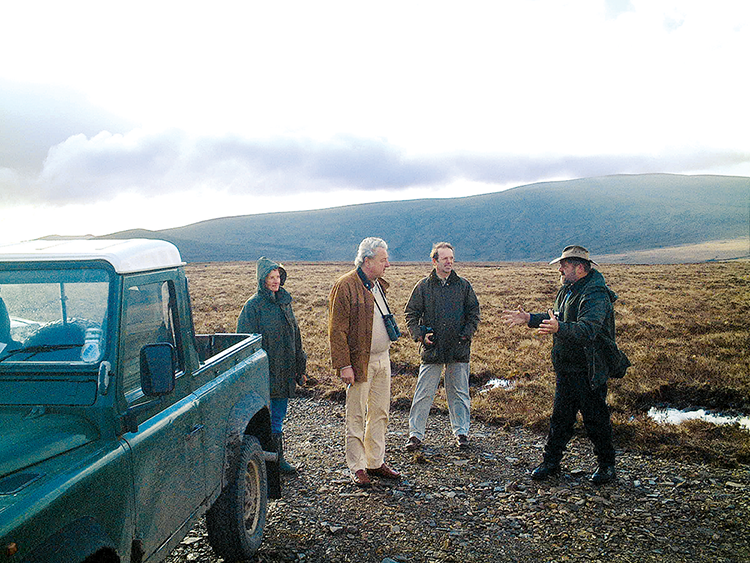





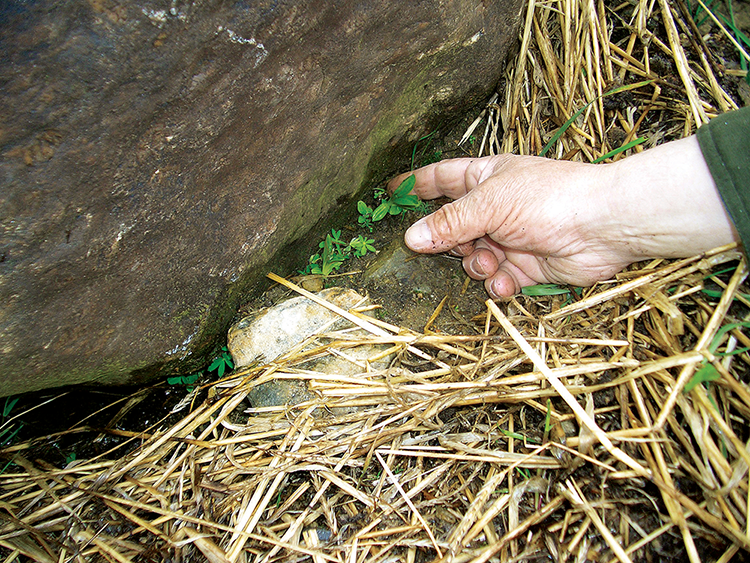

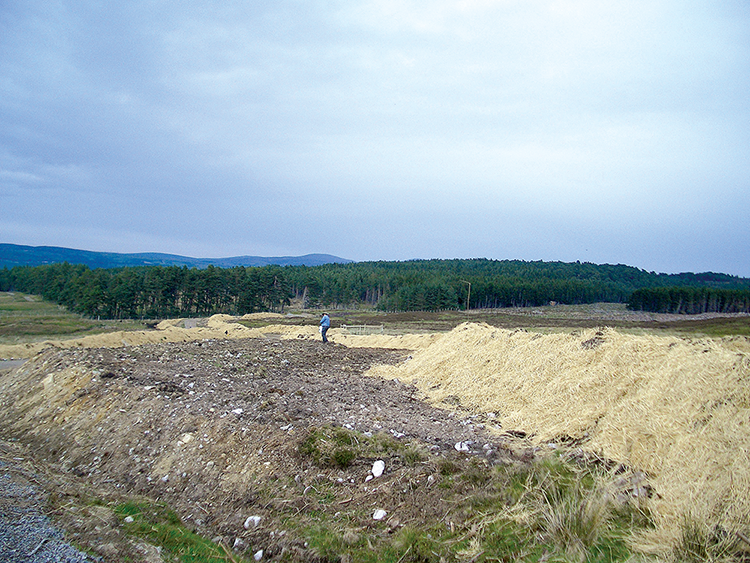

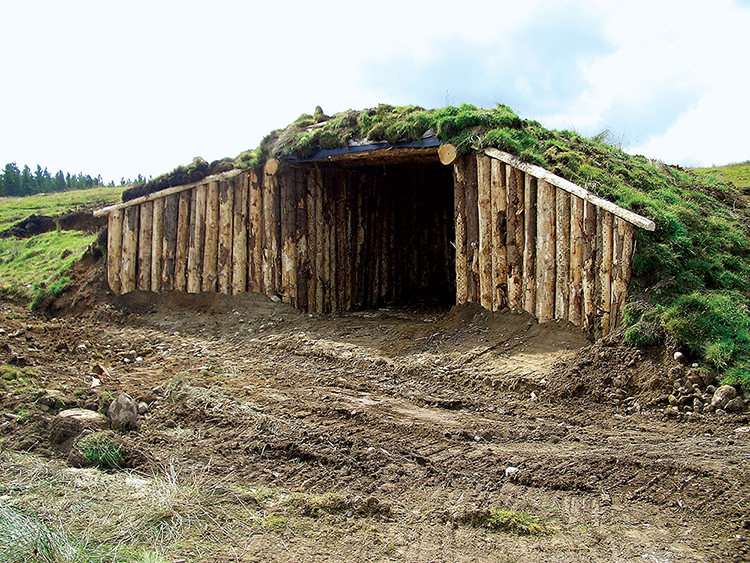


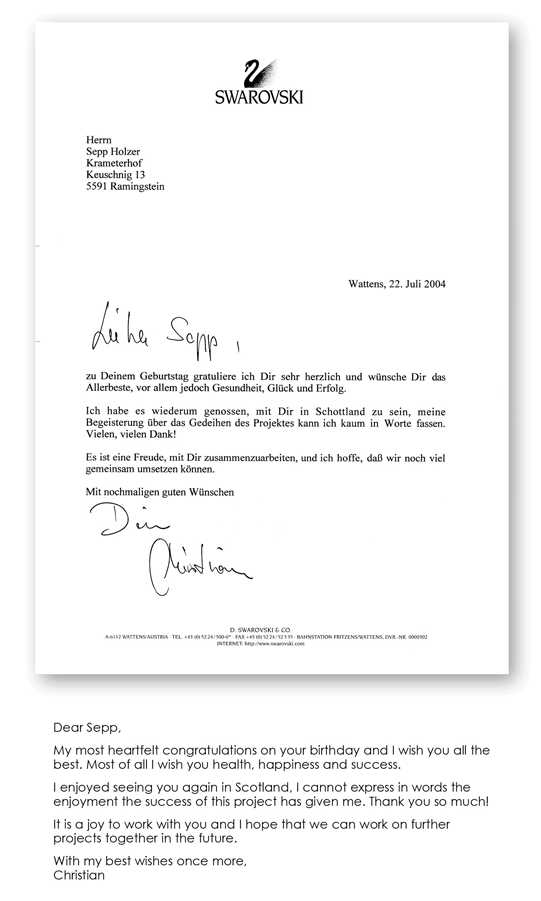
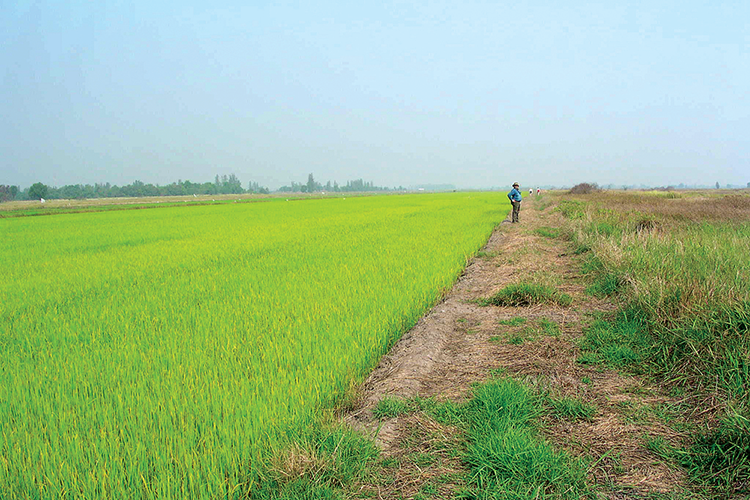



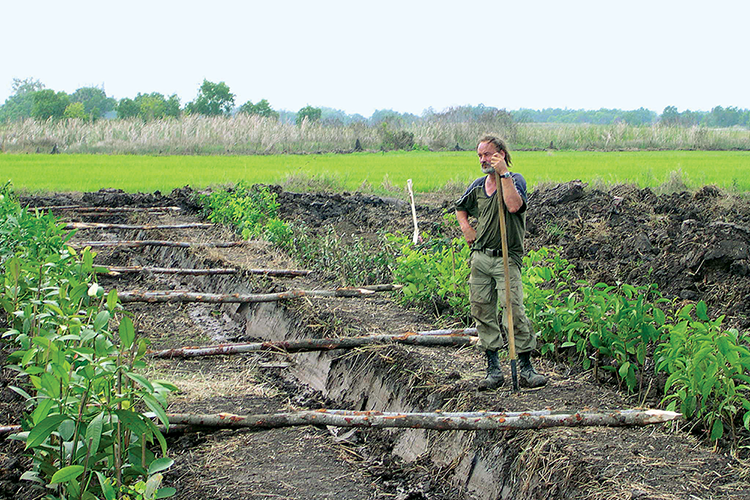
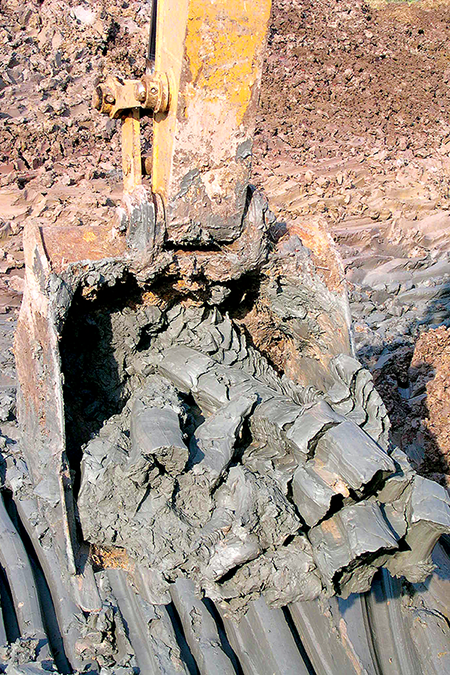
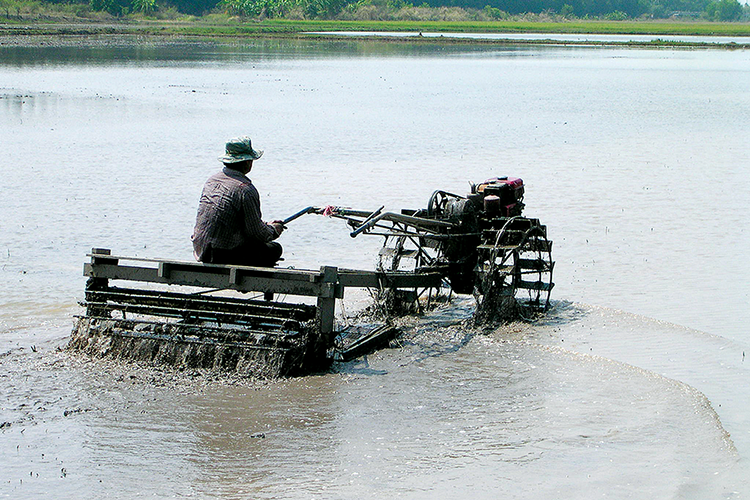
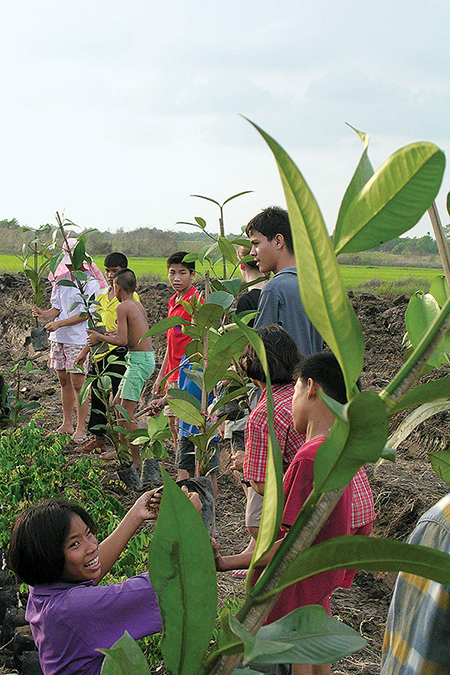
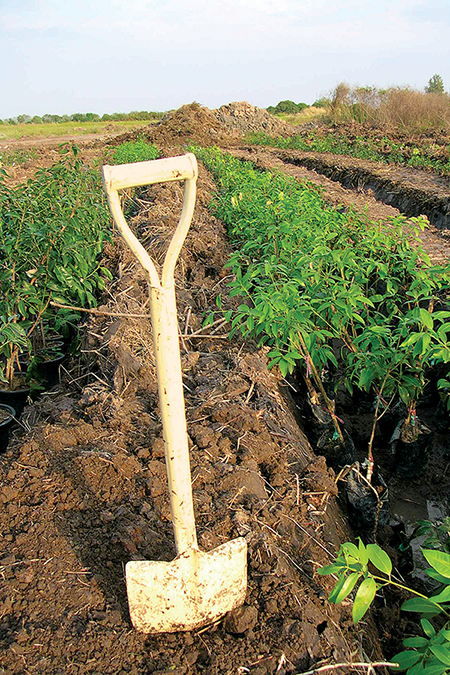
 : a Project for Lebenshilfe Ausseerland
: a Project for Lebenshilfe Ausseerland
